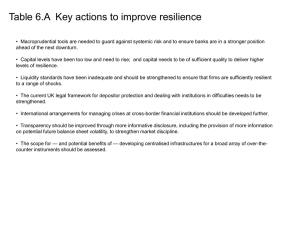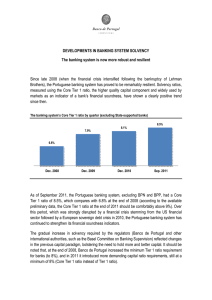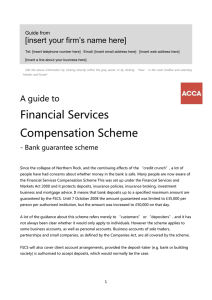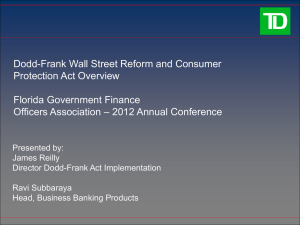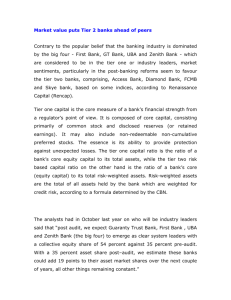6 The medium-term agenda
advertisement
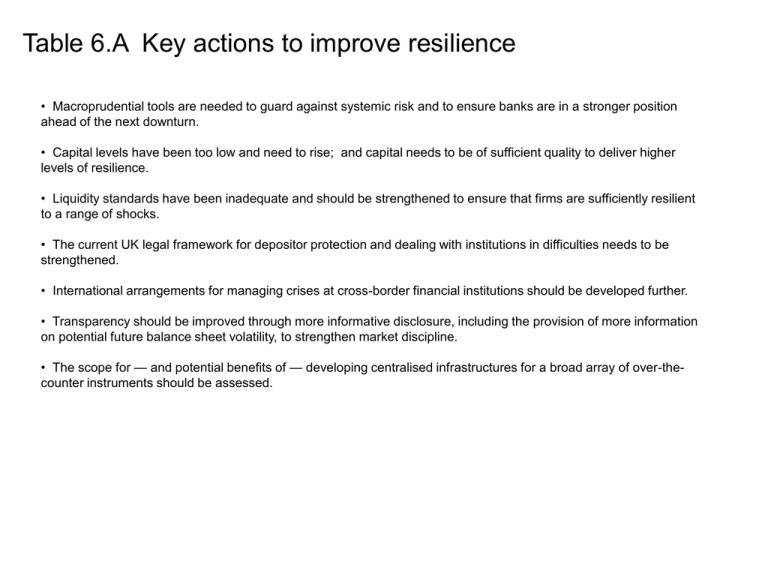
Table 6.A Key actions to improve resilience • Macroprudential tools are needed to guard against systemic risk and to ensure banks are in a stronger position ahead of the next downturn. • Capital levels have been too low and need to rise; and capital needs to be of sufficient quality to deliver higher levels of resilience. • Liquidity standards have been inadequate and should be strengthened to ensure that firms are sufficiently resilient to a range of shocks. • The current UK legal framework for depositor protection and dealing with institutions in difficulties needs to be strengthened. • International arrangements for managing crises at cross-border financial institutions should be developed further. • Transparency should be improved through more informative disclosure, including the provision of more information on potential future balance sheet volatility, to strengthen market discipline. • The scope for — and potential benefits of — developing centralised infrastructures for a broad array of over-thecounter instruments should be assessed. Chart 6.1 Long-run capital levels for US commercial banks 1840–1993(a) Source: Berger, A, Herring, R and Szegö, G (1995), ‘The role of capital in financial institutions’, Journal of Banking and Finance, pages 393– 430. (a) (b) (c) (d) (e) Equity as a percentage of assets (ratio of aggregate dollar value of bank book equity to aggregate dollar value of bank book assets). National Banking Act 1863. Creation of Federal Reserve 1914. Creation of Federal Deposit Insurance Corporation 1933. Implementation of Basel risk-based capital requirements 1990. Chart 6.2 Key components of Tier 1 and Tier 2 capital and relevant regulatory limits under Pillar 1(a) Source: General Prudential Sourcebook for Banks, Building Societies, Insurers and Investment Firms, FSA. (a) Limits are expressed in terms of Tier 1 which excludes Tier 1 innovative instruments and also deducts investments in own shares, intangible assets and other specific Tier 1 deductions. (b) Includes non-repayable capital contributions and externally verified interim net profits after prudential filters (eg losses arising from valuation adjustments). (c) A step-up clause allows an increase in the coupon rate beyond a specific date. (d) Provisions that cannot be identified to specific transactions and correspond to portfolios under the standardised approach. (e) The positive difference between the level of provisions and the level of expected losses associated with portfolios under the internal ratings based (IRB) approach. Chart A Dynamic provisioning Table 6.B Elements of the Banking Bill 2008 • Establishes a special resolution regime (SRR) to provide the Authorities with tools to deal with banks that encounter, or are likely to encounter, financial difficulties. • Establishes a new bank insolvency procedure, based on existing liquidation provisions, to provide for the orderly winding up of a failed bank and to facilitate rapid Financial Services Compensation Scheme (FSCS) payments to eligible claimants or a transfer of such accounts to another institution. • Establishes a new bank administration procedure for use where there has been a partial transfer of business from a failing bank. • Includes powers to enable the introduction of pre-funding for the FSCS; allows the FSCS to contribute to costs arising from the use of the SRR; and allows the National Loans Fund to make loans to the FSCS. • Gives the Bank of England a statutory role in the oversight of interbank payment systems. • Replaces existing provisions about banknotes in Scotland and Northern Ireland; empowers the Treasury to make regulations about banknotes, including a requirement on note-issuing banks to have backing assets; and permits the Bank of England to make rules about the treatment, holding or issuing of banknotes. • Includes provisions relating to the governance of the Bank of England, including a new statutory financial stability objective and the establishment of a Financial Stability Committee as a subcommittee of the Bank’s Court of Directors. Source: The Banking Bill 2008.
